
MR. PHAM TAN NGOC THUY, DEPUTY DIRECTOR OF DANANG DEPARTMENT OF EDUCATION AND TRAINING:
Sustainable direction to improve education quality
The policy of developing a unified set of textbooks nationwide is an important step to ensure fairness, consistency and quality in education. This helps to overcome the disparity between localities in book selection, while reducing pressure on teachers and parents. When there is a common set of textbooks, testing, evaluation, teacher training and teaching management will also be more convenient and consistent.
In the past 5 years, although implementing a program with many sets of textbooks, in reality, students only taught one set of textbooks. Therefore, implementing a uniform set of textbooks is not difficult in teaching. When implementing a set of books, the quintessence of the sets of books that have been implemented will be selected, while overcoming the limitations seen through actual teaching at school.
However, besides the advantages, there are also some difficulties and challenges. When applying a single set of books, flexibility is needed so that the learning content is suitable for all regions, especially students in remote areas or special areas. Along with that, the process of compiling a standard set of books, comprehensive, scientific , modern but still close and easy to access requires the participation of a team of experienced experts with practical understanding.
When switching to a common set of textbooks, the education sector must reorganize training and development for teachers, ensuring that teachers understand and apply the new curriculum well; standardize teaching equipment, supporting materials and testing and assessment methods to match the content of the books. Communication and guidance for parents and students also need to be focused on to create consensus and correct understanding of the policy's objectives.
When implementing a unified set of textbooks, it is necessary to allow localities a certain amount of flexibility in supplementing, expanding or adjusting local content such as history, geography, regional culture, etc. to increase the closeness and practicality for students. In addition, there needs to be a clear roadmap to avoid sudden changes so that teachers and schools have time to prepare. For the policy to be effective, it is necessary to attach importance to the training of teachers. With the experience of organizing training many times when implementing the 2018 education program, the city's education sector will be flexible and well-prepared to not only stop at training but also be a continuous training process, accompanying teachers in approaching the teaching of this unified set of textbooks.
To promote initiative and creativity in teaching and learning, the Ministry of Education and Training needs to direct the testing and evaluation, especially the question-setting stage, to help teachers and students develop the qualities and abilities that the program has set for each subject. It is possible to allow and encourage localities to develop supplementary materials and high-quality reference books, suitable to the characteristics and development orientation of the city, on the basis of closely following the curriculum framework and the spirit of the common textbook set. Thus, the new textbook set will truly be a flexible tool, promoting the spirit of innovation and creativity, contributing to realizing the goal of improving the quality of comprehensive education for students.
MR. LE MANH TAN, VICE PRINCIPAL OF NGUYEN VAN THOAI HIGH SCHOOL, HOA XUAN WARD:
Stimulate students' thinking and creativity
According to the 2018 general education program, textbooks are deployed with the goal of creating richness and diversity in learning materials. Each approved set of books basically follows the program, ensuring teaching and learning requirements. However, with different approaches of many groups of authors, many learning materials used in each set of books are different. This not only creates diversity in learning materials for exploitation, but also creates a certain barrier when students study in different sets of books and access the same knowledge content. In reality, many teachers in the teaching process have not yet promoted the spirit of the program as "law", unified nationwide; textbooks are teaching tools, implementing the program, leading to dependence on textbooks, not promoting students' capacity according to the new program. Having many sets of books also makes it difficult to exchange experiences between different regions and localities about the set of books.
Therefore, building and using a unified set of textbooks nationwide is a timely and necessary policy. To build a set of textbooks, I think that in terms of knowledge, it is necessary to ensure absolute scientific accuracy and strictly adhere to professional principles. In terms of content, it must be updated, approaching modern knowledge of the world, avoiding being outdated as soon as it is published. At the same time, it must ensure openness, conformity with the program and have space for teachers to promote creativity, flexibly adjust teaching methods to suit students from urban, rural, mountainous areas... and the actual conditions of the locality.
The unified set of textbooks should focus on the core knowledge and skills that students need to achieve at each level of education according to the requirements of the 2018 general education program. The content structure must be logical and consistent between subjects in the same grade and between grades (from grade 1 to grade 12), avoiding duplication or conflicting knowledge. The presentation must be scientific, lively, attractive, suitable for the psychology of the age; the language must be clear, lucid, and easy to understand. In addition, the textbooks should focus on training students in thinking methods, self-study skills, and problem-solving through a series of learning activities such as starting, exploring, practicing, and applying. Instead of just providing knowledge and closed questions, the textbooks should have many open-ended questions, stimulating critical thinking and encouraging students to approach problems from many different directions.
In terms of teaching methods, teachers now have access to the new curriculum, so when switching from many sets of books to a unified set of books, training needs to focus on new points, different from before. In particular, instructional videos and lecture simulations should be created so that teachers can proactively research and study anytime, anywhere, contributing to improving the effectiveness of implementation and spreading the spirit of educational innovation.
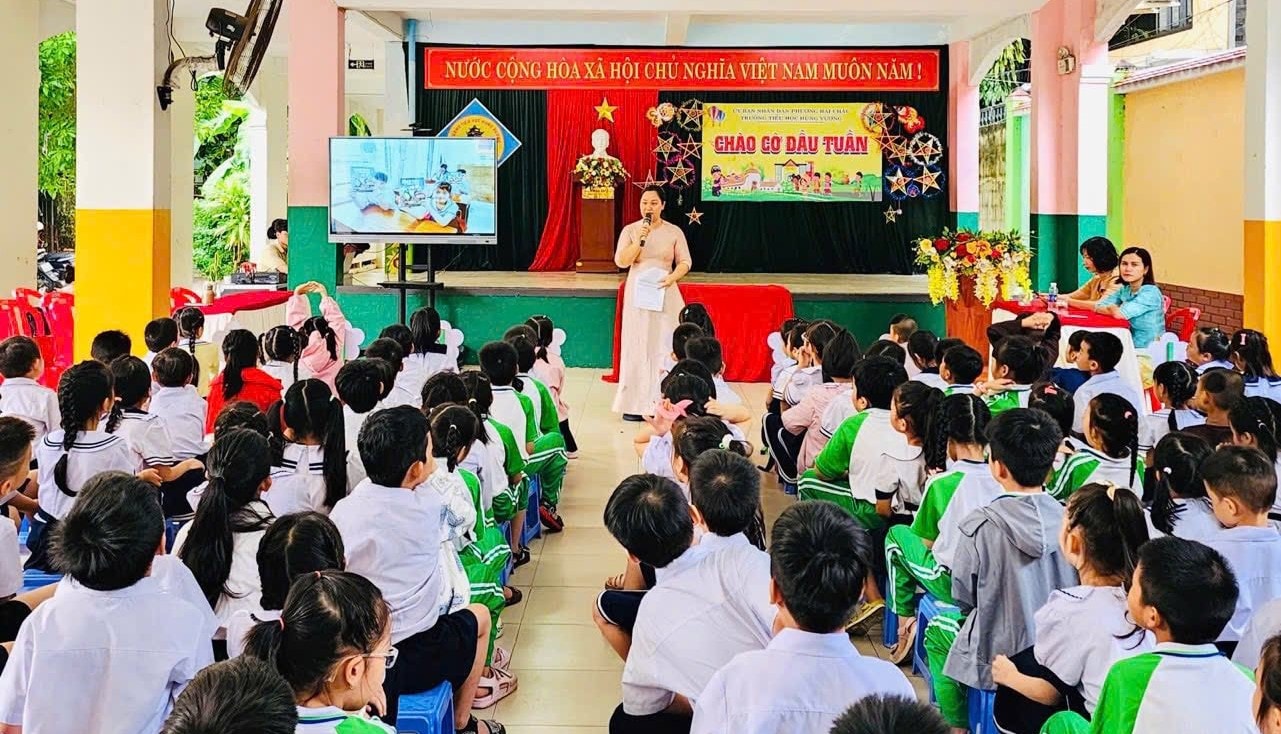
MR. NGUYEN VAN TUAN, TEACHER OF NGUYEN HUE SECONDARY SCHOOL, HAI CHAU WARD:
The development of books requires the participation of teachers.
As a secondary school teacher with many years of direct teaching and access to different textbooks in the 2018 general education program, I see that the current textbooks... all have their own advantages in terms of structure, methods and learning activity systems. Integration needs to be based on the principle of synchronizing the program, methods, and assessments, ensuring no overlap, no increase in knowledge content but still promoting the advantages of each textbook. In addition, it is also necessary to eliminate the limitations of each current textbook set such as a lot of knowledge content and limited visualization.
Therefore, the common textbooks must be compiled in a reasonable integrated and differentiated way, helping students to study flexibly according to their abilities, regions, and socio-economic conditions. The important principle is standardization and fairness in accessing knowledge. At the same time, the development of textbook content requires the participation of a team of practical teachers in different regions, because they are the ones who understand the needs, abilities of students, cultural characteristics and specific teaching conditions. The process of criticism and testing needs to be organized seriously and objectively to ensure practicality and feasibility.
To develop a unified set of textbooks in time for the 2026-2027 school year, it is necessary to establish a National Council to direct the compilation and appraisal, have a strict and transparent working process, and apply digital technology in design, criticism and testing. At the same time, it is necessary to have an early training roadmap for teachers so that they can grasp the spirit of the new set of books before putting them into use. A unified set of textbooks is only truly valuable when it ensures both quality and science, and is suitable for teaching practice. If we know how to inherit the quintessence, integrate reasonably and put learners at the center, we will have a modern, friendly set of books, contributing to fundamental and comprehensive innovation of general education.
MR. LE ANH TUAN, VICE PRINCIPAL OF DUY TRUNG PRIMARY SCHOOL, DUY XUYEN COMMUNE:
Pilot on a small scale before mass adoption
Currently, the 2018 general education program is using many different sets of books, the content between the sets of books has differences in presentation, knowledge level, language materials, data, illustrative examples and different approaches... leading to a lack of consistency in teaching. Having many sets of books makes teachers have to spend more time comparing and redesigning lessons to match the knowledge standards of the program. This poses a challenge for teachers in having to master the content and methods of many different sets of books, not to mention the assessment of students between schools in the province, city, and the whole country is not synchronous, the exchange and communication of students will be more difficult.
Therefore, when using a common set of textbooks nationwide, it is necessary to unify the overall program. The set of textbooks must closely follow the national education program, ensuring consistency in goals, core knowledge content and output standards for students nationwide. In addition, there needs to be flexibility to be able to customize and supplement knowledge and content suitable to the cultural, economic and social characteristics of each locality. At the same time, it should be stable, avoiding sudden changes over each school year so that teachers and students can access and use it effectively. In particular, it is necessary to ensure that the set of textbooks can be suitable for the diverse levels and abilities of students, with advanced exercises and basic exercises, helping to differentiate clearly. The content of the books needs to be closely linked to real life, providing knowledge that can be applied immediately to solving problems in daily life; applying teaching methods that are student-centered, encouraging students to self-study, cooperate and present their own views.
In particular, it is necessary to develop a detailed work plan with specific timelines, ensuring progress according to the set roadmap, and to pilot and adjust accordingly. It is possible to pilot on a small scale before mass application. From there, the organization collects comments from teachers, students and experts to evaluate the effectiveness of the book series. Based on the pilot results and feedback, make appropriate adjustments before promulgation.
To adapt to the new set of books, it is necessary to organize training courses for teachers, equip them with skills and appropriate teaching methods. When training, it is necessary to focus on content and pedagogical methods, through various forms such as: direct training, online, self-study and experience exchange, ensuring that teachers have a firm grasp of the content, methods and skills to approach the new set of books. Provide full support materials for teachers, students and parents, including teacher's books, exercise books, reference materials; build an online learning platform, provide supplementary materials, practice exercises and other support tools.
MR. DINH GIA THIEN, PRINCIPAL OF PHAN BOI CHAU HIGH SCHOOL, HUONG TRA WARD:
Need a set of books suitable for the capacity of teachers and students
In recent years, the parallel deployment of many textbooks has brought diversity in choice, creating opportunities for teachers to be more proactive in teaching, but in reality, it has also revealed many shortcomings, especially in the organization, management and ensuring consistency in schools.
Currently, the content of textbooks in schools is quite heavy. There is a situation where teachers and students do not have the conditions to conduct experiments in some experimental subjects. Therefore, we only try our best to explain the theory to students. Many teachers choose to conduct virtual experiments, but the learning efficiency is only 50%. This is a difficulty for most schools, especially in mountainous schools, where the conditions for teaching experiments are even more difficult.
I agree with the policy of using a common set of textbooks for students nationwide, because it will be easier to organize exams and evaluate quality. Although there is currently a unified framework and system of exam questions, however, when students use the same set of textbooks, the evaluation will be more convenient. When using a common set of books, teachers can agree on content, methods, output standards and student evaluation methods. At the same time, it significantly reduces the pressure of having to change documents and adjust lesson plans every school year.
In addition, parents and students also benefit from cost savings, being able to reuse books over many years, avoiding unnecessary waste. For teachers, using the same set of books will help synchronize teacher training and development. This not only facilitates schools in professional organizations but also helps improve teaching quality, and makes sharing experiences between localities more convenient. In addition, the management, inspection, evaluation and compilation of supplementary materials will also be carried out uniformly, making it easy for managers to coordinate, update and adjust content when necessary.
The policy of the Ministry of Education and Training is to compile, appraise and issue a unified set of textbooks, carried out according to a strict and scientific process, inheriting the results achieved in the previous period, and at the same time overcoming the existing shortcomings. The content of the new set of textbooks should be changed to suit the actual conditions of current teaching and learning. Specifically, such as the difficulties in teaching experimental subjects, when building a new set of textbooks, it should be changed or improved to suit the conditions of the schools.
The plan to build a new set of textbooks based on the synthesis of the advantages of previous sets of books, plus changes to suit the capacity of teachers and students in the localities is something that should be considered. At the same time, it must ensure scientific, accurate, close, easy to understand, and suitable for the psychology of students' ages. The books need to demonstrate the spirit of innovation but not separate from teaching practice, so that when applied, teachers can easily implement, and students can easily absorb and be interested in the lessons.
MR. BUI THANH HUNG, PARENT OF A STUDENT IN SON TRA WARD:
Create fairness and equality in access to knowledge for all children
As a parent with a child studying in grade 7 in Son Tra ward, I completely agree with the policy of building and using a unified set of textbooks nationwide. In the past, my family, as well as many other parents in the locality, have experienced certain difficulties when their children study different sets of textbooks. Especially when transferring schools makes children confused, parents also have to spend more time and effort to guide and support their children in studying. Students' access to many sets of textbooks creates diversity in content, but also causes barriers in the learning process. The knowledge and presentation of different sets of books makes students have to get used to new approaches many times, easily leading to overlapping knowledge, making it difficult to absorb deeply. With a unified set of textbooks, children will study on the same knowledge foundation, helping them easily grasp the content, reduce learning pressure and increase confidence in the learning process.
For parents, I see this policy as bringing many advantages. When children study a single set of books, we can closely monitor their learning process, prepare lessons for them, support their review or answer questions more effectively. There will no longer be a situation where each class and each school uses a different set of books, which will help parents reduce pressure and feel more secure about the quality of education their children receive. When teachers nationwide use the same set of books, the quality of teaching is also easily standardized, students in different localities have the opportunity to access similar knowledge, thereby contributing to ensuring fairness in education.
I also heard about the move towards providing free textbooks to students. This is the desire of many parents, especially those from families with difficult economic circumstances, when this policy is implemented, it will bring fairness and equality in access to knowledge for all children, regardless of family circumstances. At the same time, it shows the special concern of the Party and State for future generations, affirming the correctness of comprehensive care in the field of education.
For the above reasons, I believe that the implementation of a unified set of textbooks will bring practical benefits to the whole society. This is a necessary step, in line with the direction of educational innovation, helping to improve the quality of teaching and learning, while creating fairness, convenience and sustainability in the entire education sector.
Source: https://baodanang.vn/doi-moi-vi-nen-giao-duc-toan-dien-mot-bo-sach-cho-moi-hoc-sinh-3309411.html




![[Photo] Da Nang: Hundreds of people join hands to clean up a vital tourist route after storm No. 13](https://vphoto.vietnam.vn/thumb/1200x675/vietnam/resource/IMAGE/2025/11/07/1762491638903_image-3-1353-jpg.webp)



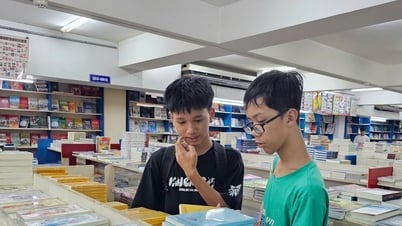
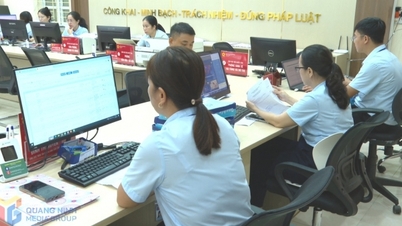

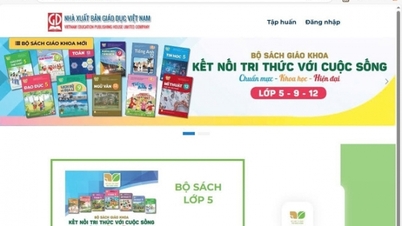

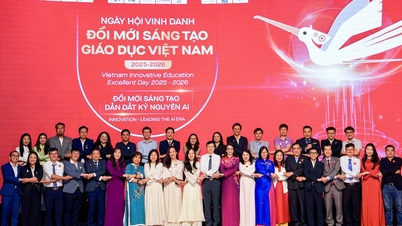

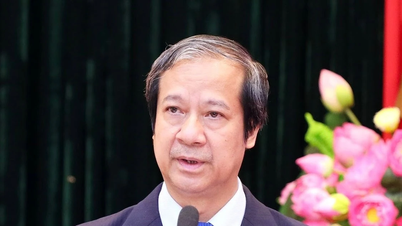








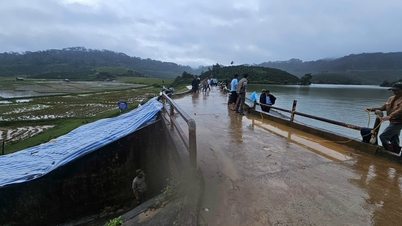

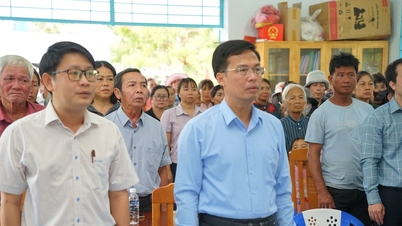
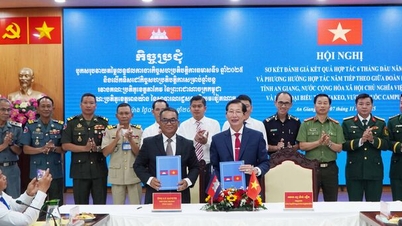





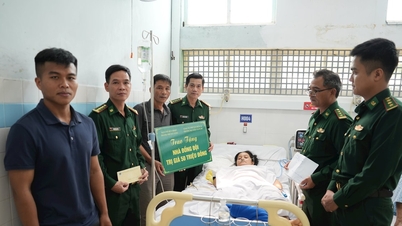
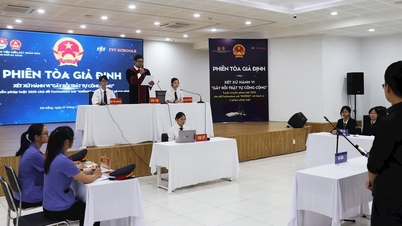




















































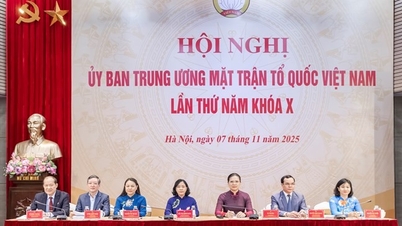
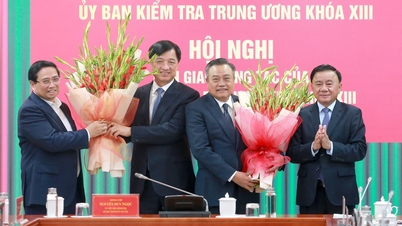







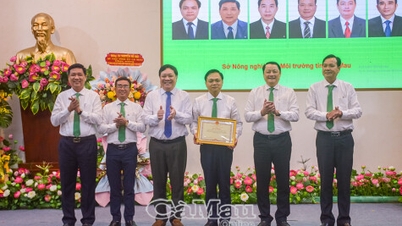

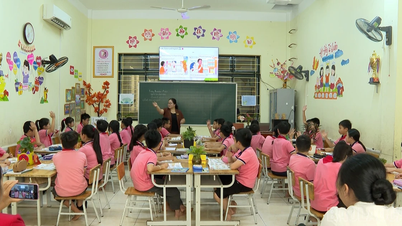
















Comment (0)